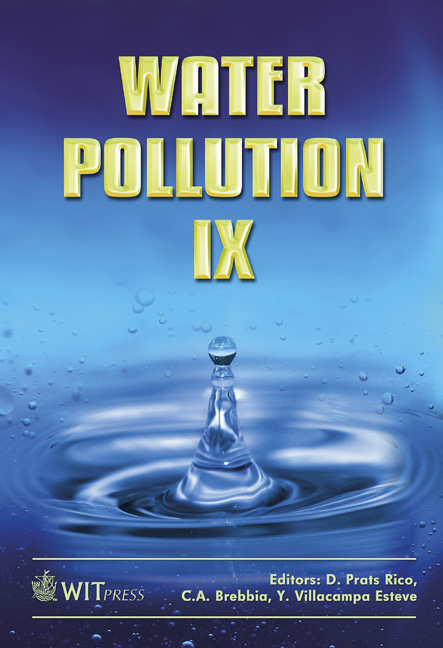Dissolved Organic Carbon Removal By Biological Treatment
Price
Free (open access)
Transaction
Volume
111
Pages
8
Page Range
445 - 452
Published
2008
Size
311 kb
Paper DOI
10.2495/WP080431
Copyright
WIT Press
Author(s)
C. Pipe-Martin
Abstract
Dissolved organic carbon (DOC) is problematic in water recycling or wastewater disposal when it provides precursors for disinfection by-product formation or when it provides a carbon/energy source for microorganisms and biofilms in receiving waters and in distribution systems. Biologically stable water protects receiving waters and recycled water systems. This paper provides initial findings of a research project into optimising DOC removal from water by biological treatment in order to improve its quality and protect public and environmental health. Biological treatment achieves this goal while minimising highly technological and energy intensive processes. The effects of chemical pretreatment, dissolved oxygen, filtration media choice, pre-oxidation and flow rate are reported. Initial results demonstrate that low flow rate biologically active carbon (BAC) filtration can exhibit biological degradation processes with much higher DOC removal than typically observed in conventional BAC filtration. Results also indicate that the high level of biological activity observed requires aeration to meet oxygen demand and that ozonation improves DOC removal but is not essential for high rate removal. Characterisation of the DOC components removed has been conducted and has identified and quantified the organic compound fractions removed by the biological processes. BAC filtration has the potential to achieve high levels of DOC removal with low energy consumption Keywords: DOC removal biological treatment water stability biofilm BAC. 1 Introduction 1.1 Project scope There has been enormous growth in the use of recycled water in recent years. At the same time discharge limits for contaminants in wastewater released to
Keywords
DOC removal biological treatment water stability biofilm BAC.





